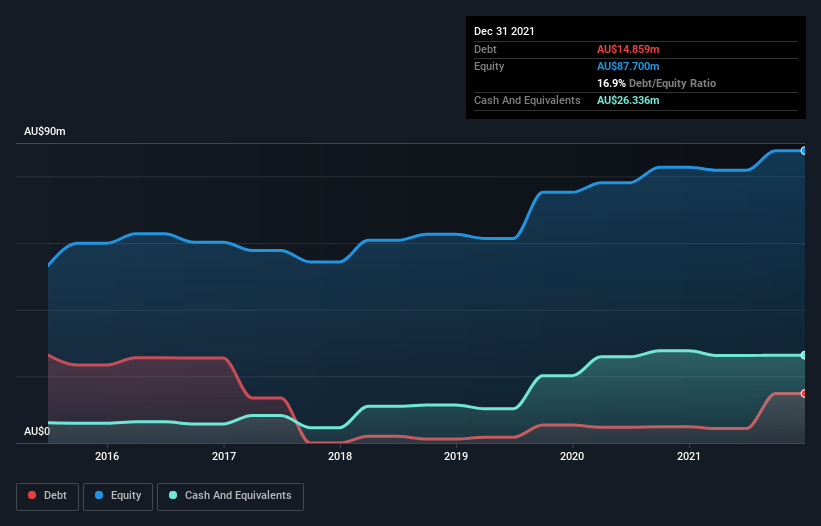These 4 Measures Indicate That CountPlus (ASX:CUP) Is Using Debt Extensively
Legendary fund manager Li Lu (who Charlie Munger backed) once said, 'The biggest investment risk is not the volatility of prices, but whether you will suffer a permanent loss of capital.' It's only natural to consider a company's balance sheet when you examine how risky it is, since debt is often involved when a business collapses. We note that CountPlus Limited (ASX:CUP) does have debt on its balance sheet. But is this debt a concern to shareholders?
What Risk Does Debt Bring?
Debt is a tool to help businesses grow, but if a business is incapable of paying off its lenders, then it exists at their mercy. Part and parcel of capitalism is the process of 'creative destruction' where failed businesses are mercilessly liquidated by their bankers. However, a more usual (but still expensive) situation is where a company must dilute shareholders at a cheap share price simply to get debt under control. Of course, plenty of companies use debt to fund growth, without any negative consequences. The first step when considering a company's debt levels is to consider its cash and debt together.
See our latest analysis for CountPlus
How Much Debt Does CountPlus Carry?
As you can see below, at the end of December 2021, CountPlus had AU$14.9m of debt, up from AU$4.85m a year ago. Click the image for more detail. However, its balance sheet shows it holds AU$26.3m in cash, so it actually has AU$11.5m net cash.
A Look At CountPlus' Liabilities
According to the last reported balance sheet, CountPlus had liabilities of AU$327.1m due within 12 months, and liabilities of AU$45.5m due beyond 12 months. Offsetting these obligations, it had cash of AU$26.3m as well as receivables valued at AU$310.1m due within 12 months. So its liabilities outweigh the sum of its cash and (near-term) receivables by AU$36.2m.
This deficit isn't so bad because CountPlus is worth AU$73.1m, and thus could probably raise enough capital to shore up its balance sheet, if the need arose. But we definitely want to keep our eyes open to indications that its debt is bringing too much risk. Despite its noteworthy liabilities, CountPlus boasts net cash, so it's fair to say it does not have a heavy debt load!
Shareholders should be aware that CountPlus's EBIT was down 90% last year. If that decline continues then paying off debt will be harder than selling foie gras at a vegan convention. The balance sheet is clearly the area to focus on when you are analysing debt. But it is future earnings, more than anything, that will determine CountPlus's ability to maintain a healthy balance sheet going forward. So if you want to see what the professionals think, you might find this free report on analyst profit forecasts to be interesting.
Finally, while the tax-man may adore accounting profits, lenders only accept cold hard cash. While CountPlus has net cash on its balance sheet, it's still worth taking a look at its ability to convert earnings before interest and tax (EBIT) to free cash flow, to help us understand how quickly it is building (or eroding) that cash balance. Over the last three years, CountPlus actually produced more free cash flow than EBIT. There's nothing better than incoming cash when it comes to staying in your lenders' good graces.
Summing up
While CountPlus does have more liabilities than liquid assets, it also has net cash of AU$11.5m. The cherry on top was that in converted 144% of that EBIT to free cash flow, bringing in AU$3.3m. So while CountPlus does not have a great balance sheet, it's certainly not too bad. When analysing debt levels, the balance sheet is the obvious place to start. However, not all investment risk resides within the balance sheet - far from it. Case in point: We've spotted 4 warning signs for CountPlus you should be aware of.
When all is said and done, sometimes its easier to focus on companies that don't even need debt. Readers can access a list of growth stocks with zero net debt 100% free, right now.
Have feedback on this article? Concerned about the content? Get in touch with us directly. Alternatively, email editorial-team (at) simplywallst.com.
This article by Simply Wall St is general in nature. We provide commentary based on historical data and analyst forecasts only using an unbiased methodology and our articles are not intended to be financial advice. It does not constitute a recommendation to buy or sell any stock, and does not take account of your objectives, or your financial situation. We aim to bring you long-term focused analysis driven by fundamental data. Note that our analysis may not factor in the latest price-sensitive company announcements or qualitative material. Simply Wall St has no position in any stocks mentioned.

 Yahoo Finance
Yahoo Finance 
